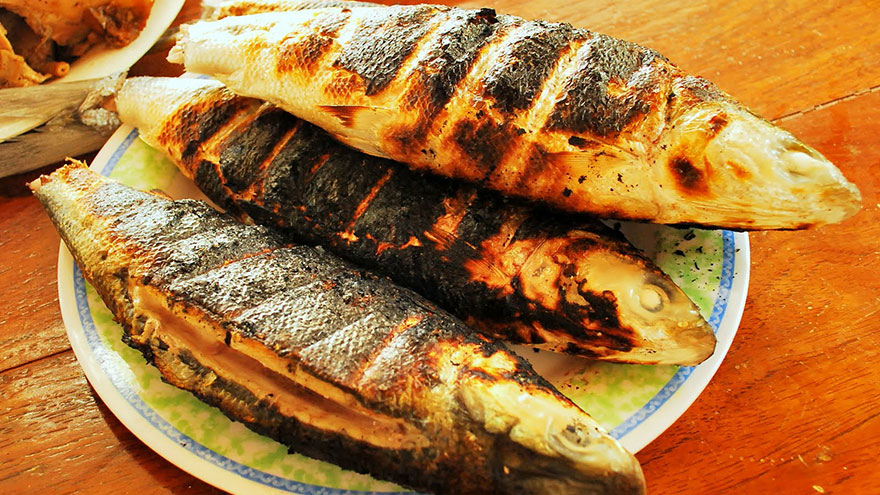How to Cook Bangus
Bangus, also known as milkfish or bangos, is a fatty white-fleshed fish with a rich taste and smooth texture. The fish has many pin bones. These thin bones run from the backbone of the fish through the fillets to its belly.
Widely used in Southeast Asian cuisine, bangus can be cooked whole or in fillets. Commonly sold frozen in Asian grocery stores, you can sometimes find it fresh. Use dry- or wet-heat cooking method to prepare bangus.

Cleaning and Preparation
Whole bangus is often sold frozen, pre-gutted with all of the bones removed, in either skinless fillets or with the head and skin attached. If the skin is attached, the fish still needs to be scaled.
To clean a whole bangus, position a sharp chef’s knife at a 45-degree angle, and scrape off the scales, going against the grain, starting at the tail end. Cut a slit from the middle of the belly up to the chin of the fish, pulling out the guts and washing out the stomach. Remove the gills from the fish. The gray-colored part of the fish is the belly. Leave this in rather than cutting it out, as it is prized for its richness and smooth texture.
Seasoning
Bangus has a rich taste, especially the fatty belly portion. Because it is not fishy tasting and has delicately textured, flaky, white flesh, it also lends itself well to strong flavors. A staple food in the Philippines, bangus can be marinated with traditional Asian seasonings prior to cooking, such as soy sauce, garlic, ginger and pepper.
The dense texture of the fish and its full taste also means that it pairs well with rich, tropical flavors, such as coconut milk. If you are marinating your fish before cooking it, rub the marinade into the flesh and let the fish sit for 15 minutes, allowing the seasonings to penetrate. For non-Asian flavors, stick with strong seasonings, such as Cajun spice mix or even Montreal steak spice to highlight the fish’s flavor and texture.
Using in Soups and Stews
When you prepare it adobo style, season bangus with garlic, ginger, soy sauce and some white vinegar before cooking. In some cases, tomatoes are also added, cooked until they are just softened.
Bangus is best when it is just cooked through. Overcooking ruins the texture of the fish, giving the flesh a grainy texture. When adding bangus to soups or stews, cook all other ingredients before adding the fish. Bring the liquid to a rolling boil before adding in the fish, then cover the pot and let the mixture boil for no more than 10 to 15 minutes.
For fish that is softer in texture, cook the fish no more than five to 10 minutes in boiling liquid. Bangus is fully cooked when its flesh is white and firm, and its gray belly turns a translucent dark gray and becomes firm.
Fried or Baked
Fried or baked bangus is most commonly made with whole, skin-on pieces. The thicker skin of bangus helps keep the flaky flesh from falling apart. Fry or bake bangus until the skin becomes very crispy, Bangus takes well to deep-frying, and to increase crispiness, dip the fish — fillets or whole — in cornstarch before deep-frying so that a thin layer of starch clings to the flesh.
For baked fillets, bake them over high heat at about 350 degrees Fahrenheit, until they are just cooked, or roughly 30 minutes. Whole bangus also takes well to stuffing if fried or baked. Fill the cleaned belly cavity with chopped vegetables, pork or stir-fried rice, stitching closed the belly before cooking the fish. You can pour a sauce, such as a tomato-based spicy mixture, onto the fried fish. This softens the skin but still lets you enjoy the rich taste of fried bangus.
You Might Also Like :: Cooking Frozen Salted Mackerel
